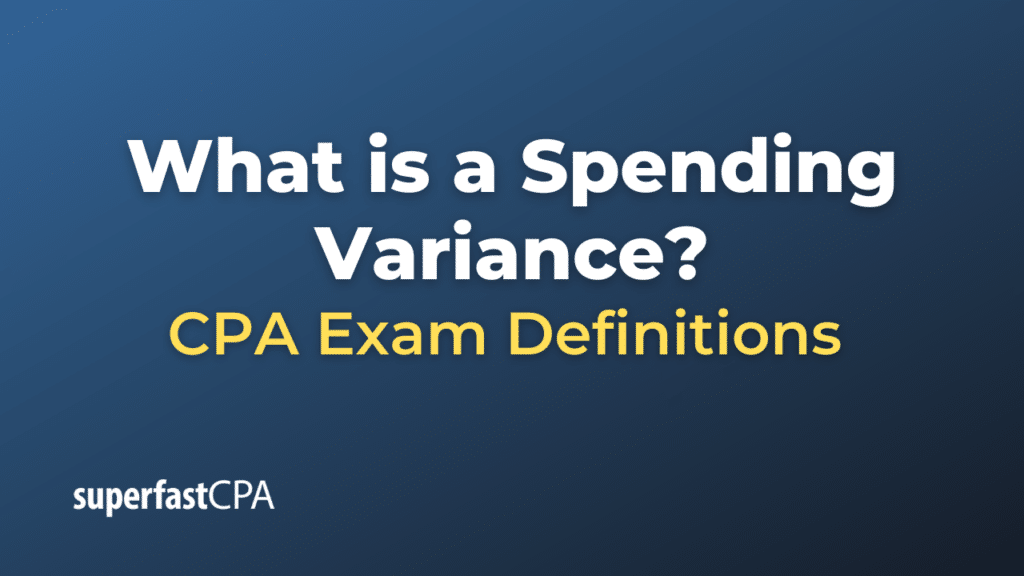Spending Variance
A spending variance, often referred to in managerial accounting as a cost variance or price variance, is the difference between the actual amount spent and the budgeted or standard amount that was expected to be spent over a given period or for a specific activity. Spending variances can be evaluated for both variable and fixed costs, and they help managers understand whether the company is operating within its budgeted cost structure.
Spending variance can be broken down mainly into two types:
- Direct Materials Price Variance: This examines the difference between the actual cost of direct materials and the standard cost that was expected.
Formula: (ActualPrice − StandardPrice) × ActualQuantity - Direct Labor Rate Variance: This assesses the difference between the actual hourly labor rate paid and the standard hourly labor rate that was budgeted.
Formula: (ActualHourlyRate − StandardHourlyRate) × ActualHoursWorked
There can also be spending variances associated with variable overhead and fixed overhead, but the above two are the most commonly evaluated in production scenarios.
Example of a Spending Variance
Let’s explore a comprehensive example that covers both Direct Materials Price Variance and Direct Labor Rate Variance.
Example: ABC Toy Manufacturing Company
ABC Toy Manufacturing produces wooden toy blocks. They have standard costs for both the wood material and labor required to produce these toys.
Direct Materials Price Variance:
- Standard Information: ABC’s standard cost for the wood required to produce a set of toy blocks is $5. They plan to produce 1,000 sets, so the expected material cost is $5,000 (1,000 sets x $5/set).
- Actual Information: Due to a shortage of quality wood in the market, the actual cost of wood has increased. ABC ends up spending $5.50 for the wood required for each set. For 1,000 sets, the actual cost is $5,500 (1,000 sets x $5.50/set).
- Variance Calculation:
(ActualPrice − StandardPrice) × ActualQuantity
($5.50 – $5) x 1,000 = $500 unfavorable variance.
Direct Labor Rate Variance:
- Standard Information: ABC’s standard labor rate is $10 per hour. It typically takes one hour to produce a set of toy blocks. Therefore, for 1,000 sets, they budgeted a labor cost of $10,000 (1,000 hours x $10/hour).
- Actual Information: ABC had to hire some temporary workers at a higher rate due to increased demand. They paid an average hourly rate of $11. The total actual labor cost for 1,000 sets is $11,000 (1,000 hours x $11/hour).
- Variance Calculation:
(ActualHourlyRate − StandardHourlyRate) × ActualHoursWorked
($11 – $10) x 1,000 = $1,000 unfavorable variance.
Conclusion:
For ABC Toy Manufacturing, both the direct materials and direct labor costs were higher than expected, resulting in unfavorable variances of $500 and $1,000 respectively. The management at ABC needs to assess these variances to determine if they are one-time occurrences or if they indicate a trend. Depending on the cause, they might renegotiate with suppliers, adjust pricing, find alternative materials, or improve production efficiencies.













